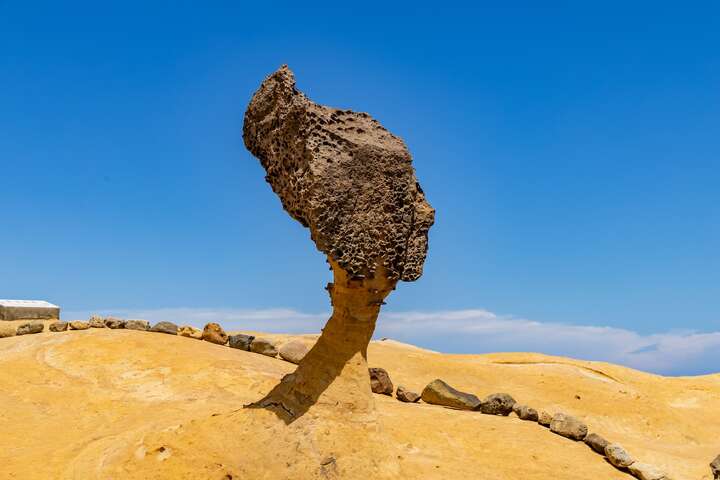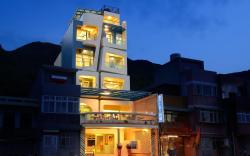Yehliu Geopark Introduction
Yehliu Geopark, known for its奇岩美石 (strange rock formations), is a cape where the remnants of the Datun Mountain range extend into the sea. It has been shaped by weathering, coastal erosion, and tectonic movements, creating unique geological features such as mushroom rocks, sea caves, tofu rocks, candle-shaped rocks, and potholes. It is a renowned natural scenic area internationally. Among these, the "Queen's Head" is the most iconic landmark and a popular photo spot in Yehliu. The Yehliu coastal cape is divided into three main areas. The first area features various and uniquely shaped mushroom rocks and candle rocks, where visitors can observe the developmental process of these formations lined up in different sizes, creating a delightful and soothing landscape. In the second area, the highlights of Yehliu, such as the Queen's Head, Dragon Head Rock, and Diamond Rock, can be found. Close to the coast in this area, visitors can also spot other geological features like the "Fairy Shoe" and "Peanut Stone." Don't forget to look for them during your visit to Yehliu! The third area consists of a coastal erosion platform that houses special rock formations like the Twenty-Four Filial Piety Stones and Bead Stones. This area is also an important ecological conservation zone in Yehliu. In 1962, during the "Forgotten Paradise" photography exhibition, a unique mushroom rock in Yehliu was named the "Queen's Head." Its elegant curve resembles a queen gazing into the distance, creating a sensation and transforming Yehliu from a fishing village into a major tourist destination on the northern coast, with the Queen's Head becoming a symbol of Yehliu. Additionally, in the first area of the cape, the "Playful Princess," resembling a ponytail, has been gaining popularity in recent years and is hailed as the successor to the Queen's Head.
































